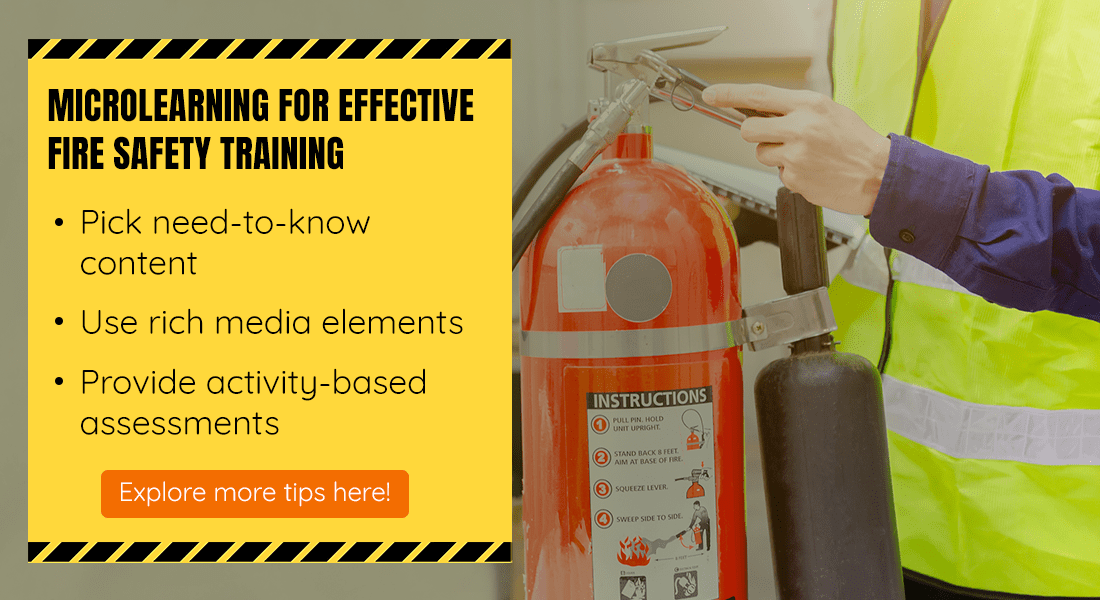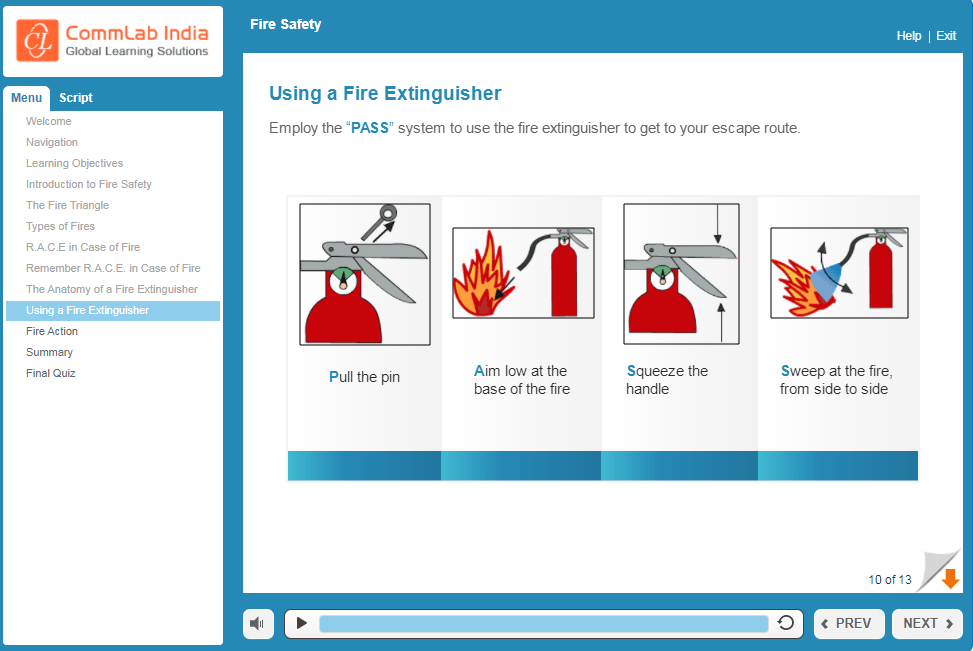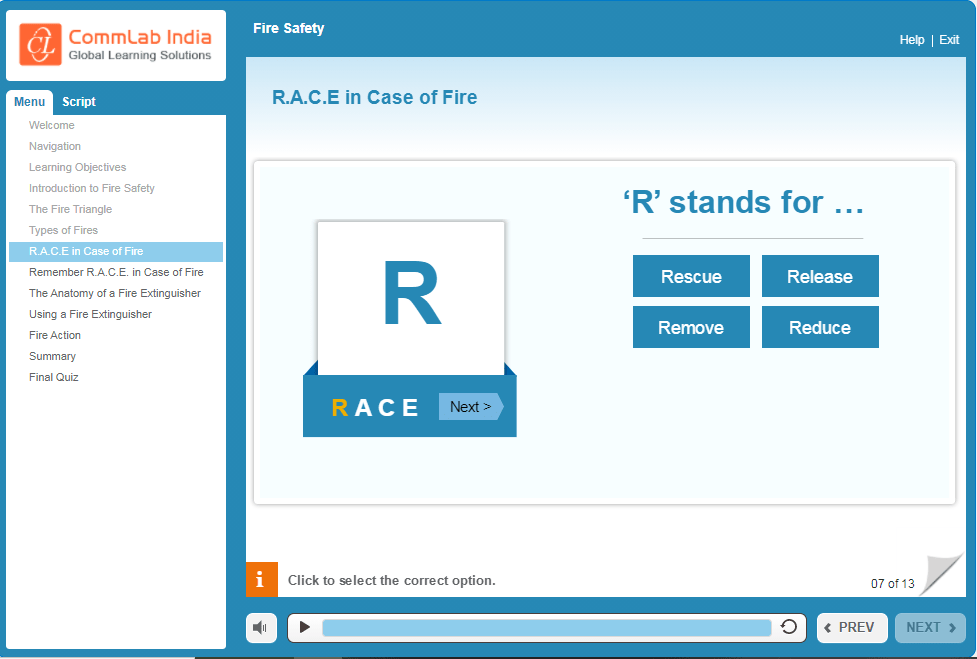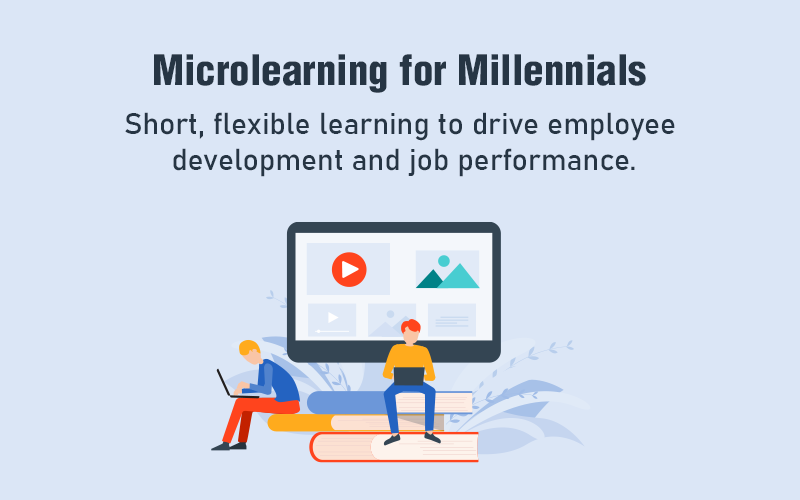5 Tips for Effective Fire Safety Training with Microlearning

Did you know that over 100,000 fires occur annually, costing losses to the tune of more than 2.4 billion dollars? What does microlearning have to do with this? Read on for the answers.
What would you do if a fire breaks out at your workplace? Run from it? Hurry to get water to extinguish it? Search for the nearest fire extinguisher? Raise the alarm? Phone the Fire department? More importantly, what would your employees do?
Would they even know what type of fire is raging in the workplace and how to use the fire extinguisher? Do they know how to reach the nearest safety exit?
Fire safety training is mandatory in most organizations. But just how effective is your fire safety training?
Any fire safety training needs to train employees on how to put out the fire (if it’s controllable), and where to find the nearest safety exit if it isn’t. These are the essential elements in fire safety training. Then why do we unnecessarily complicate it? Why do we bring in a lot of irrelevant stuff into the training?
Let’s simplify it and make it more effective with microlearning!
Why Use Microlearning for Fire Safety Training?
For fire safety training, microlearning modules can be used before the training session as icebreakers, short, engaging videos, infographics, or even as interactive quizzes to assess previous learning. They can be used to impart critical need-to-know information in the actual training session, and as a tool to refresh and reinforce the learning after the training.
Introducing Microlearning
Microlearning solutions deliver valuable need-to-know information in short nuggets, making it easier for learners to retain, remember, and apply their knowledge/skills at work. And that makes for effective learning, doesn’t it?
Explore what microlearning is and isn’t.
Microlearning nuggets can be used in a variety of ways (such as explainer videos, infographics, flashcards, or GIFs) in pre-training, refresher training, assessments, and performance support in spaced intervals.
Here’s a brief look at different microlearning assets that can be used to deliver microlearning digitally.

For fire safety training, microlearning modules can be used before the training session as icebreakers, short, engaging videos, infographics, or even as interactive quizzes to assess previous learning. They can be used to impart critical need-to-know information in the actual training session, and as a tool to refresh and reinforce the learning after the training.
Whether we know it or not, we apply microlearning in most areas of our lives. When we read a recipe to cook a new dish, go to Google to learn new ways to do something, or operate a fire extinguisher following the figures on the device itself – all that is microlearning. Checking the fire escape plan or evacuation route map is yet another good example of microlearning in fire safety.
Microlearning to Ensure Safety
Here are five tips to make your fire safety training more effective with microlearning.
1. Retain Only the Need-to-Know Content
For your fire safety training to be effective, training content should be crisp and concise, especially for the new generations of learners in your organization. So, remove all ‘nice to know’ elements from the content, retaining only the critical ‘need to know’ information.
For example, microlearning modules on fire safety can include:
- Major causes of fire accidents
- Different types of fires
- How to use a fire extinguisher
- Emergency fire exits
Nice to know information can be provided in the form additional resources and external links, so that learners can go through them in their free time.
2. Make the Training Multi-device Compatible
Microlearning gives employees the flexibility to access learning on the device of their choice. Making your fire safety micro modules compatible with multiple devices will help employees access the training on desktops, laptops, iPads, and even mobiles.
Nowadays, most employees prefer microlearning on their smartphones. Along with multi-device compatibility, responsive design provides optimal viewing and interaction experiences across multiple digital devices.
3. Use Rich Media Elements
Fire safety training is not about just providing information and useful tips. It should also engage your employees through strong visual and audio support. You can use images, graphs, charts, maps, line diagrams, and videos for visual presentation. Podcasts, background music, and audio instructions can also be used for each step.

For instance, a short video or an infographic flash card in the microlearning module can be used to demonstrate how to operate a fire extinguisher correctly. Complex procedures such as operating a fire hose can also be demonstrated creatively to make your fire safety training more engaging and effective.
4. Keep the Modules Short
Your fire safety training micromodules should ideally be around 10 minutes long. One to three learning points per module keeps them short and ensures optimum knowledge transfer. If you want to offer comprehensive training, go for a fire safety curriculum with micro modules on different topics. Too much information and too many learning points in a module can overwhelm your employees.
5. Provide Activity-based Assessments
Linking assessments to activities or the tasks to be done in case of fire accidents can be very effective for learning and retention. You can also use interactive quizzes, but ensure the questions are based on application. Making assessments informal and fun will take away the stress of learning from learners.

Simulations or drag and drop assessments to help learners practice how to operate fire extinguisher.
Summing it up
Microlearning is a flexible and one of the most effective forms of training that can be used in a variety of ways to enhance individual and organizational performance. And it makes your fire safety training more effective by delivering short bites of learning, without causing cognitive overload on the learner. And it is the ideal training format for the Gen Y and Gen Z employees with their extremely short attention spans.
If you want to learn more about implementing microlearning in your organization, here’s a free eBook WHERE DOES MICROLEARNING FIT IN YOUR LEARNING STRATEGY?





